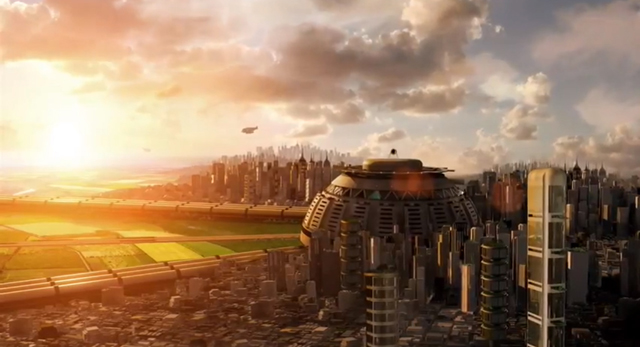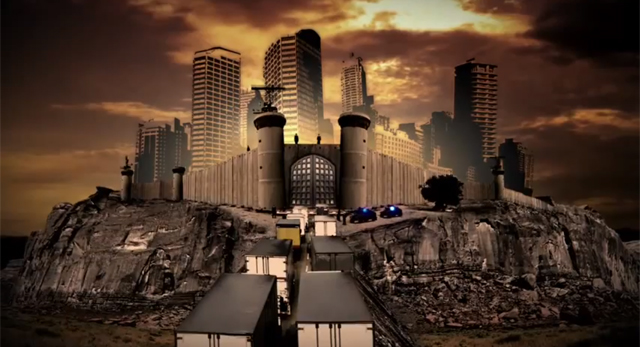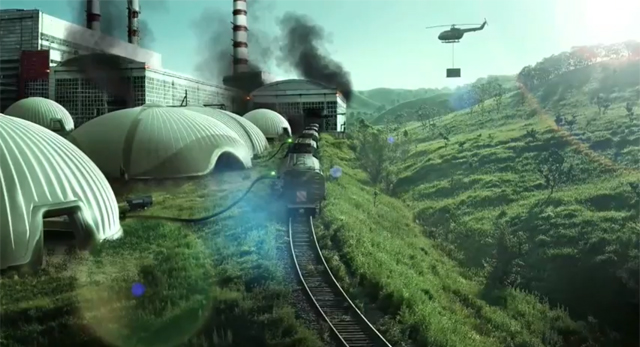What will the world be like in 2050?
Introduction
In mid-2012, the German company Deutsche Post DHL, the world's leading logistics specialist, published a 200-page document Delivering Tomorrow: Logistik 2050 , in which leading analysts of the company, with the support of international futurologists, consider the 5 most likely future development scenarios. Below is a squeeze out of this document in translation.
Scenario One

')
More than ever, in 2050 materialism rules the world. The paradigm of quantitative growth has achieved unconditional recognition throughout the world, and impetuous consumerism has taken the process of satisfying material needs to a new level.
Thanks to the consistent elimination of trade barriers, the volume of world trade has increased many times over the past 40 years. At the same time, all attempts at global regulation of sustainable development issues have failed. This is due to weak international structures that no longer have any real political power.
Former developing countries are entering the world arena and are beginning to dictate their own terms to world politics. Meanwhile, the industrial powers of the West are desperately trying to cope with internal political crises. Their main problem is the increasing deficit of state budgets amid growing external debts. And this is in the absence of an increase in the welfare of the population.
Financial markets, centers of trade and consumption are shifting to the east. In many international organizations, representatives of Asian countries take over leadership. The WTO is being replaced by a new free trade organization.
Production sites are moving to the outskirts of Asian consumption centers, and also partially returning to the west. The global transport network (supergrid) accelerates global goods traffic.
This world of materialism and consumerism is characterized primarily by the uncontrolled exploitation of natural resources. There is a complete lack of understanding of harmonious and sustainable development, and productivity and profit remain the only indicators of successful economic activity.
Such a scenario will inevitably lead to dramatic changes in ecology and climate as a whole, which in turn will cause permanent natural disasters. Mining from the depths of the oceans and in the Arctic will become commonplace, and in the end, the already disturbed biosphere of the earth will be completely destroyed.
Scenario Two

In 2050, urban agglomerations ( megacities ) will become the epicenter of social, economic and political development.
Megacities will be the main initiator of "green" development, which, in fact, will benefit most of all the rest. Typical problems of expanding urban (infra-) structures, such as air pollution and traffic jams, will be tackled by cities together.
High-performance transport concepts, such as, for example, underground freight transport and new solutions for public transport, will relieve urban highways. Computer-controlled plants no longer pollute the environment with carbon dioxide emissions. A global transport network (supergrid) is formed, which provides stable trade links between megacities.
With the support of international organizations, megacities will promote free trade and global governance models. In these new centers of world culture, technological progress is rapidly developing and the well-being of residents is growing. At the same time, the countryside comes into increasing decline.
Breakthroughs in information and communication technology will lead to an unprecedented degree of automation. Robotics can revolutionize not only production, but also the service sector. Due to such a high degree of automation, the level of employment will decrease. Consumer habits will also change: instead of buying, they will increasingly hire.
Scenario 3

By 2050, individualism becomes a global global trend.
In the process of a general increase in the level of education, the spread of new digital technologies and a global increase in welfare, the need to personalize products will determine consumer behavior in everyday life. The desire to stand out will be the only goal in life.
The industry, in turn, will contribute in every way to this, offering consumers a wide range of opportunities to customize the product according to their personal preferences.
Personalization of products and regional production structures are accompanied by a decentralized energy supply system and infrastructure. At the same time, the regional trade regulation is also increasing, because now trade flows occur exclusively at the regional level. Only the exchange of raw materials and data still proceeds globally.
Food production also occurs locally i. directly where consumed.
Technical progress is developing rapidly. The most important technology for customized production is 3-D printing. Over the past 20 years, 3-D printers have improved more and more, and their production and service has become increasingly profitable. Due to this, the technology of 3-D printing gained a leading position not only for production on an industrial scale, but also became an integral attribute in households.
The main problem in the world of individualism will be the issue of security. The first to be affected are copyright and the uncontrolled flow of personal data.
Due to the fact that production has become piece and regional, all the positive economic effects of global mass production disappear: no division of labor occurs, raw materials are used inefficiently, and energy costs increase.
The intensified growth of greenhouse gas emissions into the atmosphere continues, which only accelerates global warming and the disturbance of the Earth’s biosphere. Until the end of the century, the temperature on the globe will increase by an average of 3.5 ° C.
Scenario 4

The general economic decline leads to the fact that globalization is no longer a generally accepted dogma. Global trade is falling rapidly. Most countries are building customs and tariff barriers to protect their domestic markets.
In the international arena, all political decisions are made solely on the basis of considerations of national interests.
Meanwhile, in the world of protectionism, the second generation of people will grow up, and the memory of the advantages of free world trade disappears almost completely.
Trade traffic occurs exclusively within individual regional trade blocs. Also, most supply chains operate exclusively regionally. Only the exchange of raw materials still occurs globally.
All these events reduce the international division of labor and thus lead
to a general decline in productivity, trade suffers from insufficient investments in infrastructure expansion and maintenance. There is also stagnation in technological and high-tech development.
At the same time, a second major problem is brewing that will affect primarily Europe and Asia. Namely, the negative trend of fertility and the issue of financing old age. So the industrialized countries will be forced to spend most of the budget for providing aging generations (pensions, benefits, etc.) rather than investing in the development of the economy and trade.
Natural resources are limited. New development of deposits are unproductive, and only in rare cases it is possible to find a replacement for the usual materials.
Because of the prevailing protectionism and the constant decline in production efficiency, the negative effects of resource shortages are further aggravated. The real income of the population in traditional industrial countries is significantly reduced, and the rate of economic growth in the rest of the world is decreasing.
High energy prices and a severe shortage of natural resources are becoming the main cause of fueling interethnic conflicts. Against this background, relations between world trade blocs are deteriorating.
Under these conditions, international efforts to protect the environment and, in particular, attempts to reduce greenhouse gas emissions into the atmosphere lose all meaning. The climate continues to change and by the end of the 21st century, the temperature on Earth will rise by an average of 3.5 ° C.
Scenario 5

In the first decades of the 21st century, the stable cost of energy and low-cost automated production favorably affect consumption.
However, it was not possible to influence climate change in any way. Increasingly, natural disasters occur that systematically endanger the global supply chains on which the entire modern global economy is built. This leads to shortages in production and undermining global trading structures.
Cost-effective global supply chains can no longer be used. And instead of constantly increasing the efficiency of processes, the elimination of weak points and the creation of more reliable supply structures is becoming a new task. Instead of global, regional supply chains are becoming increasingly important.
In some economic spaces, interstate programs are being created to eliminate the consequences of natural disasters and ensure security of supplies. Artificial intelligence technologies are improving more and more. Cloud intelligence machines now allows you to instantly respond to emergency situations. Production facilities and infrastructure, depending on external conditions, can be temporarily suspended, and, if necessary, resumed work.
The priority areas of the industry are recycling and creating products with low energy consumption. End users will prefer high-quality products with a long service life.
Source: https://habr.com/ru/post/151283/
All Articles